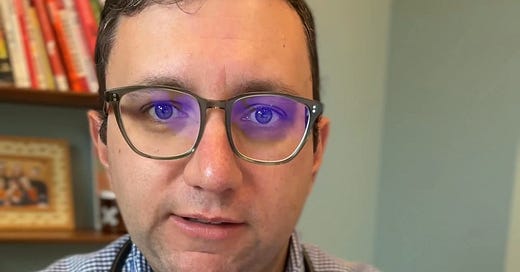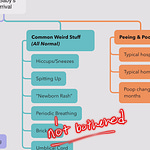A parent came in recently for a behavioral evaluation. They’d tried a handful of different interventions to help their child with focus and behavior and were now wondering: Could food dyes be the missing piece?
It’s a great question. And one I get a lot.
Let’s talk about it.
What the Research Really Says About Food Dyes
There is some scientific evidence linking artificial food dyes to behavior changes in children. But it’s nuanced.
A 2012 meta-analysis published in Neurotherapeutics found that artificial food colors may have small but measurable effects on hyperactivity in some children, particularly those with ADHD traitsParenting on Purpose Ta…. Another well-known UK study—the Southampton Study—linked certain artificial colors and sodium benzoate to increased hyperactivity in 3-year-olds and 8/9-year-oldsParenting on Purpose Ta….
But here's the key takeaway: the size of the effect is relatively modest.
“We’re usually talking about a 1% to 5% improvement in behavior or attention for a subset of children who are sensitive to food dyes.”
That’s not nothing, but it’s not a miracle either.
The Power of Stacking Small Wins
A 1% difference may not feel worth overhauling your grocery cart. But here’s the parenting truth: when you stack multiple small changes—sleep routines, less screen time, more physical activity, better nutrition, and yes, reducing food dyes—those 1% wins start to add up.
It’s not about finding the one thing that transforms your child overnight.
It’s about gradually turning the dial.
Our House Rule: Avoid, Don’t Obsess
Here’s how we handle it at our house:
We don’t typically bring food dyes home.
Our kids eat what we stock, so if it’s not there, it’s not a regular part of their diet.We don’t panic if someone with blue cupcakes or Skittles.
It's not about perfection—it’s about consistency over time.
The goal is reducing exposure, not removing or making it feel bigger than it really is.
A Simple Plan to Trial It in Your Home
If you’re curious whether food dyes might be affecting your child’s behavior, here’s a low-stress experiment you can try:
1. Commit to One Month Dye-Free
Set a time frame (e.g. 4 weeks) to avoid artificial food dyes as consistently as possible.
2. Watch for Patterns
Keep a log of your child’s behavior, focus, sleep, or mood. Note any changes you observe—positive or negative.
3. Reflect Objectively
After a month, ask:
Do I notice any difference?
Was it worth the effort?
Should we continue, adjust, or move on?
Beyond Dyes: Watch the Bigger Picture
Even if you don’t see a huge shift from removing dyes, the process of reducing ultra-processed foods—which often contain dyes, preservatives, and added sugars—can benefit your child’s health in broader ways. Kids who eat less processed food often have:
More stable energy
Fewer dramatic mood swings
Better focus and fewer sugar crashes
Improved gut health, which can influence behavior and immunity
Bottom Line
Food dyes aren't the villain behind every behavior challenge. But in some kids, especially those who seem sensitive, removing them might lead to small but noticeable improvements.
If that’s the case for your family, it’s worth exploring—especially as part of a bigger strategy.
Because in parenting, tiny changes done on purpose often lead to bigger shifts in the long run.
And that’s how we parent on purpose—not perfectly.
References:
Nigg, J.T., Lewis, K., Edinger, T., & Falk, M. (2012). Meta-analysis of attention-deficit/hyperactivity disorder or attention-deficit/hyperactivity disorder symptoms, restriction diet, and synthetic food color additives. Neurotherapeutics, 9(3), 599–609. Link
McCann, D. et al. (2007). Food additives and hyperactive behaviour in 3-year-old and 8/9-year-old children in the community: a randomised, double-blinded, placebo-controlled trial. The Lancet, 370(9598), 1560–1567. Link












Share this post